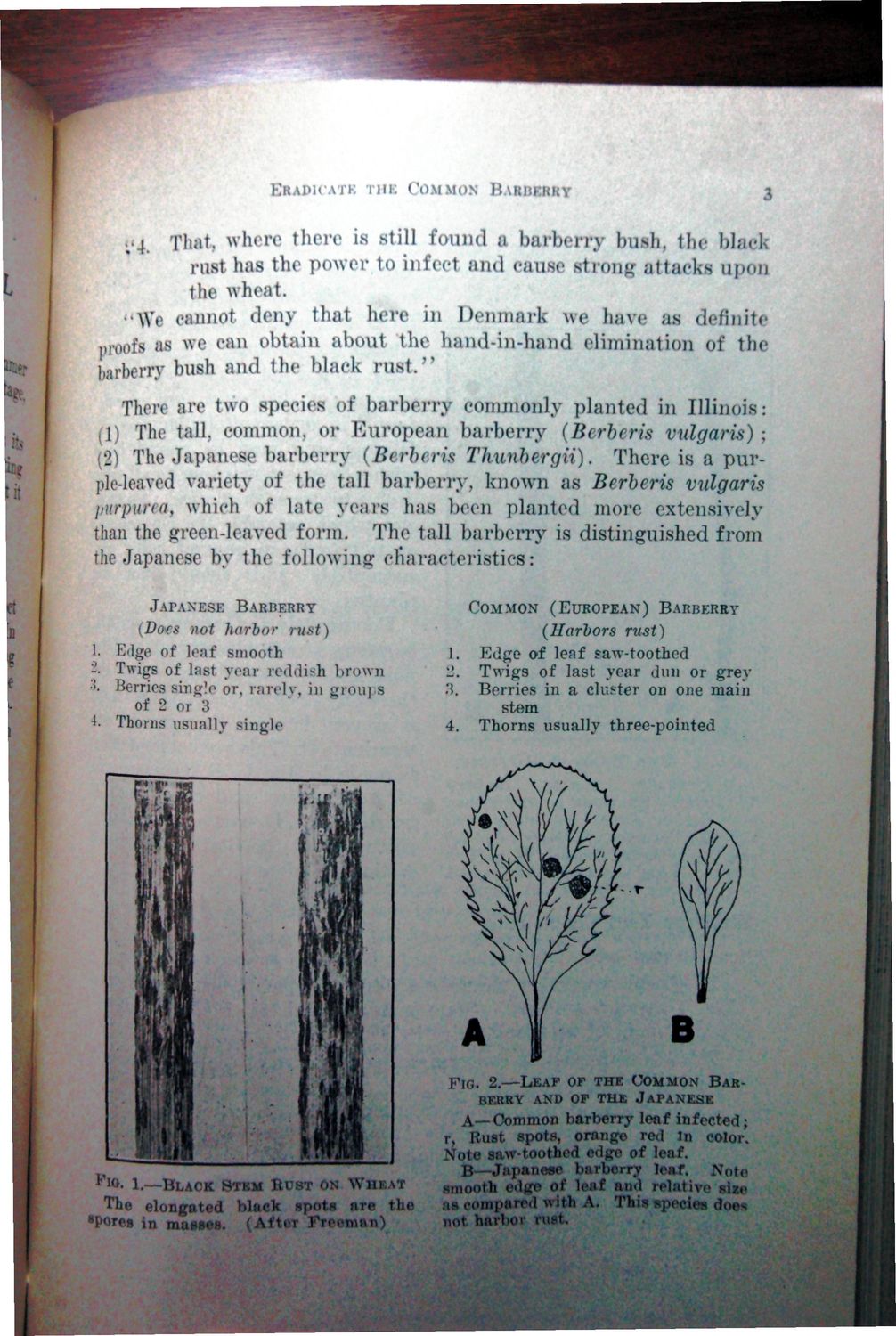Caption: War Publications - WWI Compilation 1923 - Article 29
This is a reduced-resolution page image for fast online browsing.

EXTRACTED TEXT FROM PAGE:
ARJ1ERKY 3 I ;•}. That, where there is still found a barberry hush, the bUu-k S UfM.lJ cause the w li^at. We cannot deny that here in Denmark we have- as definite proofs as we can obtain about the hand-in-liand elimination of the barberry bush and the black rust." There are two species of barberry commonly planted in Illinois: (1) The tall, common, or European barberry (Herbert's vulgaris): (2) The Japanese barberry (Btrbrris Thunhergii). There is a purple-leaved variety of the tall barberry, known as Berheris vulgaris purpura^ whieh of late years has been planted more extensively than the green-leaved form. The tall barberry is distinguished from the Japanese by the following characteristics: JAPANESE BARBERRY * i » • COMMON (EUROPEAN) BARBERRY {Docs not harbor rust) l. K.lge of leaf smooth Twigs of lost year reddish brown Berries Bingle or. rarely, in groui a of 2 or 3 4. Thorns usually single 1 4 (Harbors rtist) Edge of leaf faw-toothod Twigs of last year dun or grey Berries in a cluster on one main stem Thorns usually three-pointed r !f! if t i i « < FIG. 2.—LEAP OF THE COMMON BARBERRY AND OF THE JAPANESE a *'io. i # —BLACK ;M B U S T ON WHEAT The elongated black Hpotw are the P^es in m a i f t i . (At I eman) A—Common barberry leaf infected: r. Rust spoi orange red in color' Note law-toothed edge of leaf. B—Japanete barberry leaf. Note not harboi rust aped
|